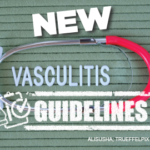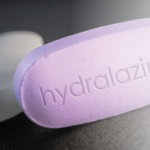When I talk to nephrologists about rituximab use, they say, ‘It’s scary because you give rituximab and high-dose prednisone, hoping the high-dose prednisone will cover patients before the full effect of rituximab kicks in.’ With rituximab, I keep a close eye on our patients to make sure their disease is going in the direction we would expect with therapy.
One more note on this topic: We received complaints that we didn’t look at rituximab and cyclophosphamide together. We had a lot of comments—both when we presented this at the 2019 ACR/ARP Annual Meeting and during journal review—saying this was a limitation. At least in the U.S., using rituximab and cyclophosphamide together isn’t widely done, and that’s one of the reasons why we haven’t commented upon it. However, a clinical trial underway in Europe is looking at the efficacy of this combination therapy.
From the guideline—Recommendation: For patients with GPA/MPA who are receiving rituximab for remission maintenance, we conditionally recommend scheduled re-dosing over using ANCA titers or CD19+ B cell counts to guide re-dosing.
Q: B cell monitoring was the focus of MAINRITSAN2.7 People received less rituximab with no significant difference in flares, but the study was underpowered, in my opinion, to detect a meaningful difference, and there may have been a trend toward harm. The guideline panel recommended against B cell monitoring. Can you talk about that decision?
Dr. Chung: There was a philosophical background to that discussion. Each of the studies that have looked at rituximab for ANCA-associated vasculitis—RAVE, the original MAINRITSAN and others—have all seen flares in patients who were B cell depleted.8 Just because someone is B cell depleted does not mean they can’t relapse.
There are also philosophical thoughts about following ANCA titers, which was the other aspect of the MAINRITSAN2 trial. Most of us feel that ANCA titers are not great indicators of disease activity, and I don’t think many of us would recommend treating patients based on ANCA titers alone.
It was a potentially underpowered clinical trial with outcomes that can be hard to interpret. We must also be concerned about using these biomarkers to indicate disease activity or need for treatment. Those factors taken together led us to recommend against routinely using B cell counts or ANCA titers to dose rituximab for remission maintenance.
I usually start off with a scheduled approach to remission maintenance, whether every six months as in MAINRITSAN, or every four months based on RITAZAREM.9 But the thought of keeping patients on scheduled dosing for the rest of their lives makes me uncomfortable. At some point, I do try to figure out a way I can limit the amount of medication I’m giving to patients. When I reach that point, monitoring B cell counts or ANCA titers is a possible strategy for limiting medication exposure.

